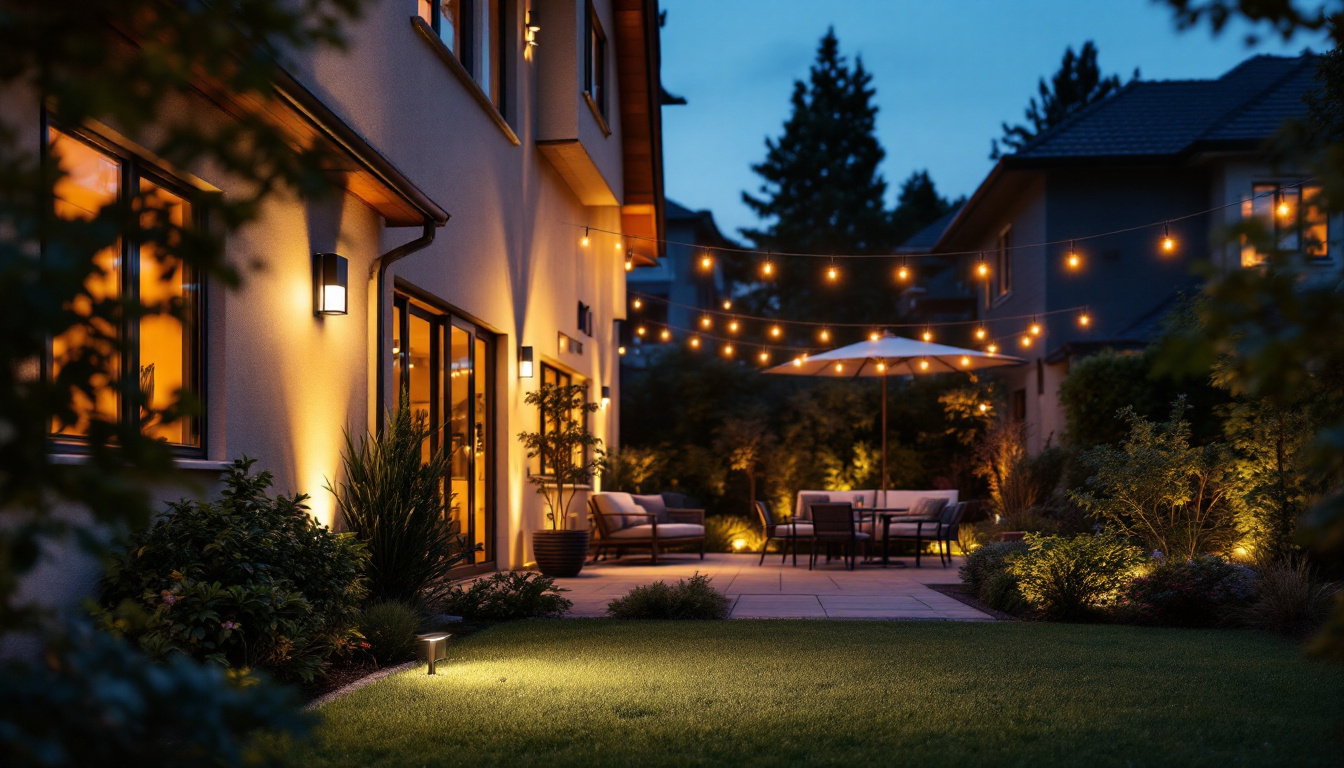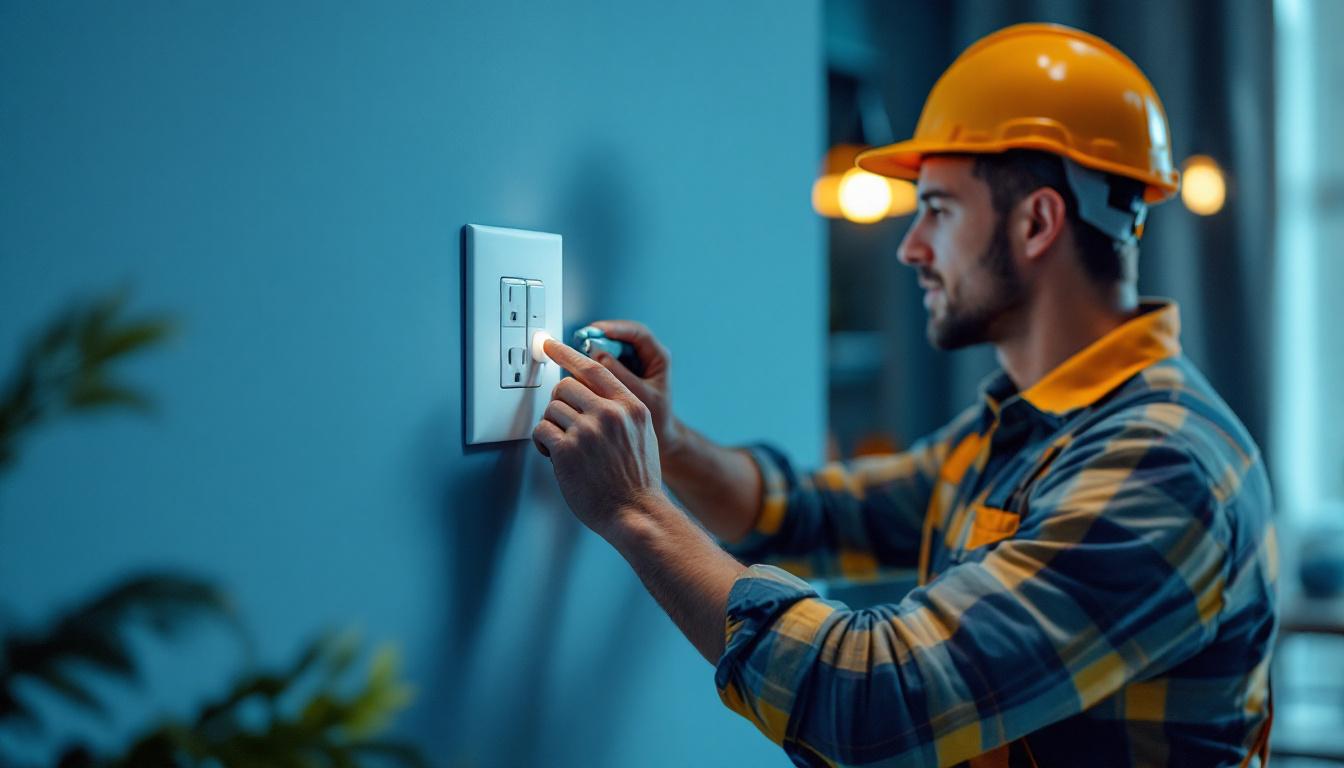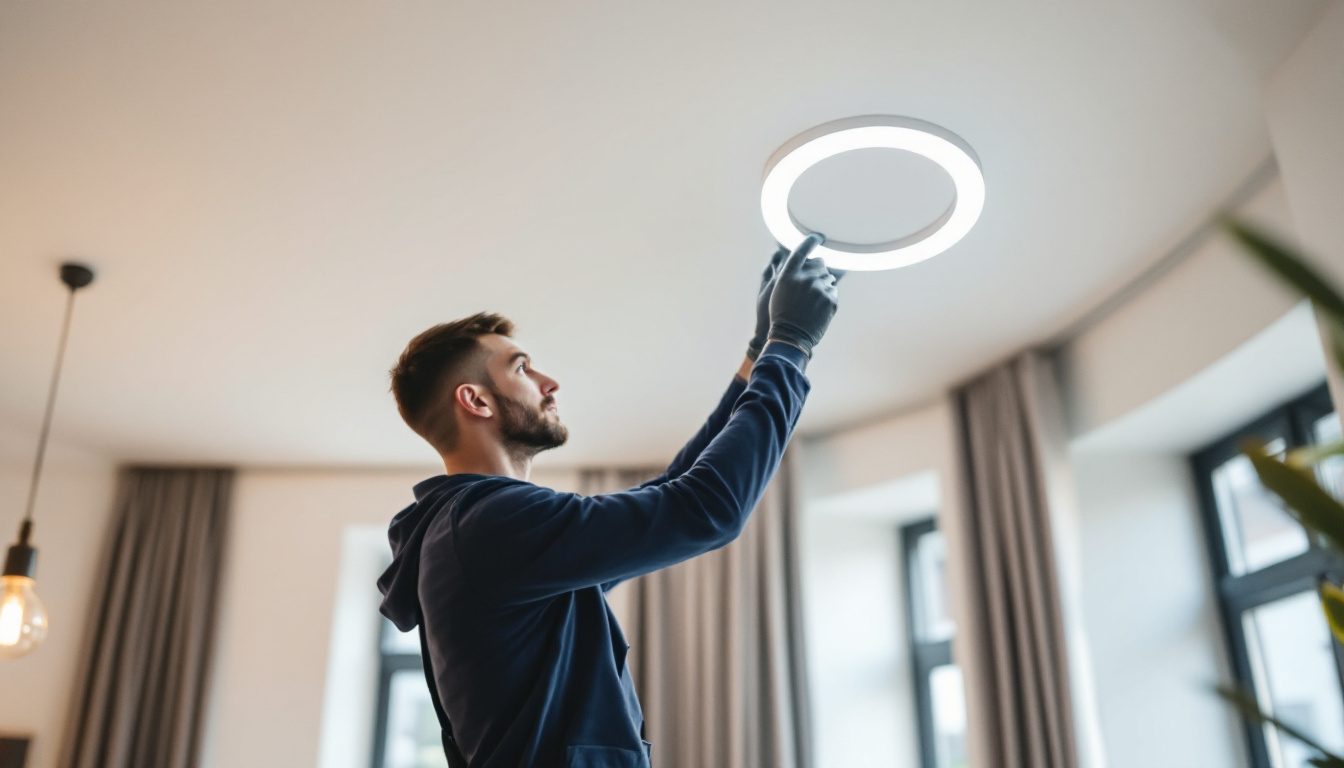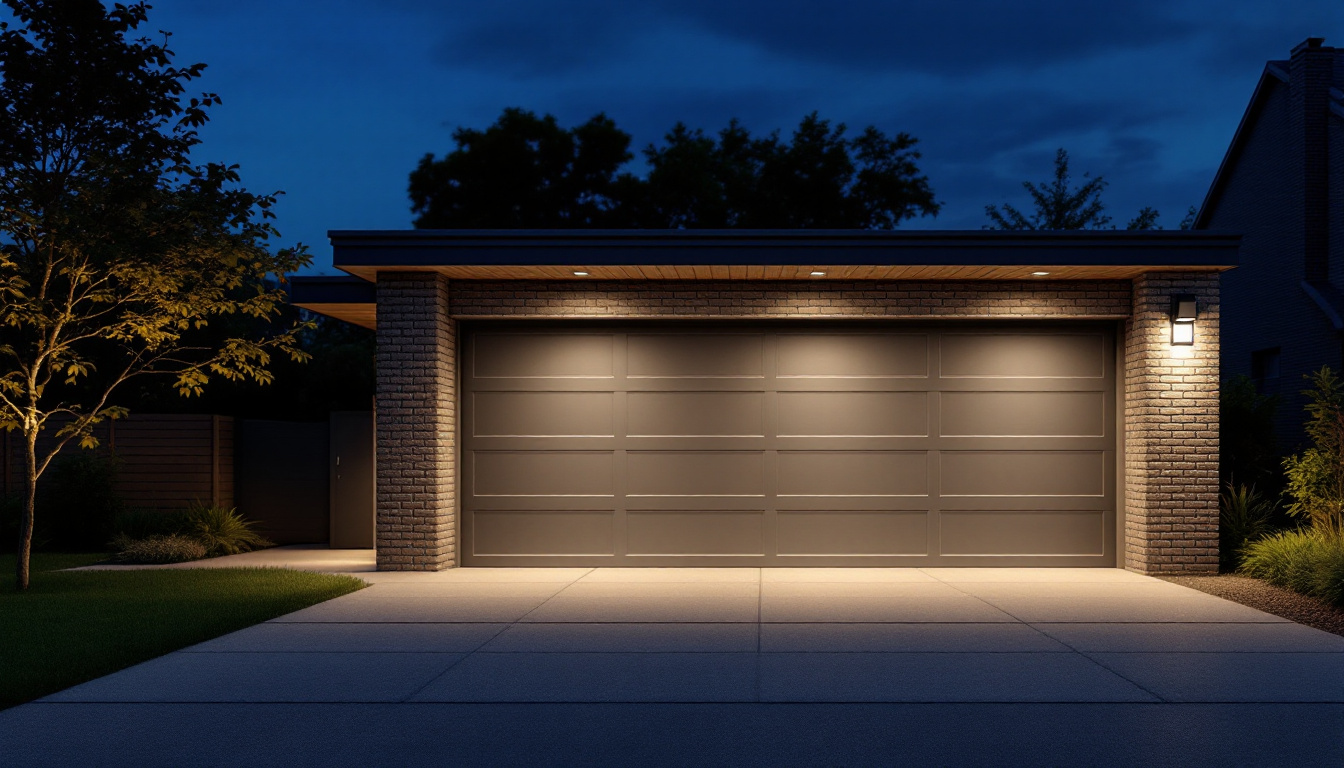
Outdoor Light Sensor Lights: Lighting Contractors’ Essential Facts
In the realm of outdoor lighting, the integration of sensor technology has revolutionized how spaces are illuminated. For lighting contractors, understanding the intricacies of outdoor light sensor lights is essential for delivering optimal solutions to clients. This article delves into the fundamental aspects of these devices, offering insights that can enhance the expertise of lighting professionals.
Outdoor light sensor lights, often referred to as motion sensor lights or dusk-to-dawn lights, are designed to automatically adjust their illumination based on environmental conditions. These lights utilize various sensor technologies to detect changes in light levels or motion, ensuring that outdoor spaces are well-lit when necessary. This technology has evolved significantly over the years, making outdoor lighting not only smarter but also more adaptable to the unique needs of different environments.
There are primarily two types of sensors employed in outdoor lighting: photocells and motion detectors. Photocells are designed to respond to ambient light levels, activating lights at dusk and turning them off at dawn. This type of sensor is particularly useful for maintaining consistent illumination in areas that require light throughout the night. Photocells can be found in various applications, from streetlights to garden lights, ensuring that these fixtures operate efficiently without manual intervention.
On the other hand, motion detectors are equipped with technology that senses movement within a designated area. These sensors can be passive infrared (PIR), which detect heat emitted by objects, or active sensors that emit signals and measure their reflection. The choice between these sensors depends on the specific requirements of the installation site. For instance, PIR sensors are ideal for residential settings where the primary concern is detecting human movement, while active sensors may be better suited for larger commercial properties that require broader coverage and more precise detection capabilities.
One of the most significant advantages of outdoor light sensor lights is energy efficiency. By ensuring that lights are only active when needed, these systems can significantly reduce energy consumption. This is particularly important for commercial properties where operational costs can be substantial. Moreover, many modern outdoor light sensor lights are equipped with LED technology, which further enhances their energy-saving capabilities, providing bright illumination with minimal power usage.
Additionally, these lights enhance security by illuminating areas when motion is detected. This not only deters potential intruders but also provides safety for individuals navigating outdoor spaces at night. The combination of energy savings and increased security makes outdoor light sensor lights an appealing option for many clients. Furthermore, many of these systems can be integrated with smart home technology, allowing users to control their outdoor lighting remotely through smartphones or home automation systems. This added convenience not only improves the user experience but also allows for customizable settings, such as adjusting sensitivity levels or scheduling specific times for lights to activate, further optimizing their functionality.
When installing outdoor light sensor lights, several factors must be considered to ensure optimal performance. Proper placement, sensor sensitivity, and environmental conditions all play a crucial role in the effectiveness of these devices.
The placement of outdoor sensor lights is paramount. They should be installed in locations where they can effectively detect motion or changes in ambient light. Common areas for installation include driveways, pathways, and entry points to buildings. Additionally, lights should be positioned to minimize obstructions, such as trees or walls, which could hinder their sensor capabilities.
It is also essential to consider the height at which the lights are mounted. Typically, a height of 6 to 8 feet is recommended for motion sensors to maximize their detection range while minimizing false triggers from small animals or passing vehicles.
Furthermore, the angle of installation can significantly impact the effectiveness of the sensors. Installing lights at a slight downward angle can enhance their ability to detect motion across a broader area, ensuring that individuals approaching from various directions are illuminated. Additionally, positioning lights away from direct sources of light, such as street lamps or car headlights, can help prevent interference with the sensor’s ability to detect changes in ambient light levels.
Many outdoor light sensor lights come equipped with adjustable sensitivity settings. This feature allows contractors to fine-tune the sensor’s responsiveness based on the specific environment. For instance, in areas with high foot traffic, a higher sensitivity setting may be appropriate, while quieter locations may require a lower sensitivity to prevent unnecessary activation.
Contractors should also educate clients on how to adjust these settings post-installation, ensuring they can maintain optimal functionality as environmental conditions change over time. It’s important to remind clients that seasonal changes, such as the shedding of leaves in autumn or the blooming of flowers in spring, can affect sensor performance. Regular maintenance checks can help in recalibrating the sensors to adapt to these changes, ensuring that the lights continue to operate efficiently throughout the year.
Additionally, clients should be informed about the potential impact of weather conditions on sensor performance. Heavy rain, snow, or fog can obscure the sensor’s ability to detect motion or light levels, leading to inconsistent operation. By understanding these factors, clients can make informed decisions about the placement and sensitivity settings of their outdoor light sensor lights, ultimately enhancing their security and convenience.
Regular maintenance of outdoor light sensor lights is crucial for ensuring longevity and consistent performance. Lighting contractors should inform clients about simple maintenance tasks that can be performed to keep the system functioning effectively.
One of the primary maintenance tasks involves cleaning the sensor lenses. Dust, dirt, and debris can obstruct the sensor’s ability to detect light or motion, leading to inefficient operation. A gentle wipe with a soft cloth can often suffice to keep the lenses clear.
Additionally, contractors should recommend periodic checks of the light fixtures themselves. Ensuring that bulbs are functioning correctly and that there are no signs of wear or damage will help maintain the integrity of the lighting system.
Despite regular maintenance, issues may arise with outdoor light sensor lights. One common problem is lights that fail to turn on or off at the appropriate times. This could be due to a malfunctioning sensor or incorrect placement. In such cases, contractors may need to reassess the installation and make necessary adjustments.
Another issue could be false triggers, where lights activate without any detected motion. This can often be resolved by adjusting the sensitivity settings or repositioning the sensor to minimize interference from nearby objects.
Educating clients about outdoor light sensor lights is essential for ensuring satisfaction and optimal use. Lighting contractors should provide clear guidance on how these systems work and the benefits they offer.
Clients may be unfamiliar with the technology behind outdoor light sensor lights. Taking the time to explain how photocells and motion detectors function can help clients appreciate the value of their investment. Providing demonstrations during the installation process can further enhance their understanding.
Contractors should also discuss the importance of proper usage, such as avoiding obstructions that could interfere with sensor functionality. This knowledge empowers clients to make informed decisions regarding their outdoor lighting needs.
In addition to educating clients about the technology, contractors should encourage energy-saving practices. For instance, suggesting the use of LED bulbs in sensor lights can significantly reduce energy consumption while providing bright illumination. Furthermore, advising clients on the optimal settings for their specific environment can enhance energy efficiency.
By promoting energy-saving practices, contractors can help clients realize the long-term benefits of outdoor light sensor lights, making them more likely to recommend these solutions to others.
The field of outdoor lighting is continually evolving, with advancements in technology paving the way for more sophisticated solutions. Staying informed about these trends is essential for lighting contractors looking to remain competitive in the market.
One of the most notable trends is the integration of smart technology into outdoor light sensor systems. Smart lighting solutions allow for remote control and monitoring via smartphone applications. This capability enables users to customize their lighting settings, receive alerts, and even integrate their outdoor lights with other smart home devices.
As smart technology becomes more prevalent, lighting contractors should familiarize themselves with these systems to meet the demands of tech-savvy clients. Offering smart outdoor light sensor solutions can set contractors apart in a competitive landscape.
Another trend is the development of sensors with enhanced capabilities, such as dual technology sensors that combine both PIR and microwave sensing. This combination allows for greater accuracy in detecting motion while reducing the likelihood of false triggers. Contractors should stay updated on these advancements to provide clients with the most effective solutions available.
Moreover, advancements in energy harvesting technology may lead to the development of sensors that can operate without direct electrical connections, further enhancing the versatility of outdoor light sensor lights.
Outdoor light sensor lights represent a significant advancement in outdoor lighting technology, offering numerous benefits for both contractors and clients. By understanding the various types of sensors, installation considerations, maintenance practices, and emerging trends, lighting contractors can provide superior service and solutions tailored to their clients’ needs.
As the demand for energy-efficient and smart outdoor lighting solutions continues to grow, staying informed and adaptable will be key for lighting professionals. Embracing these technologies not only enhances the quality of installations but also positions contractors as leaders in the evolving landscape of outdoor lighting.
Ready to elevate your lighting installations with the latest in sensor technology? At LumenWholesale, we provide lighting contractors with the highest quality, spec-grade outdoor light sensor lights at unbeatable wholesale prices. Say goodbye to local distributor markups and hello to a vast selection of reliable, high-performance lighting that meets the highest industry standards. With free shipping on bulk orders, you can stock up on premium lighting solutions at the best value — all without hidden fees or compromises. Enhance your outdoor lighting projects today by visiting Wholesale Lighting at the Best Value and discover the LumenWholesale difference.

Discover how the power outlet switch is revolutionizing the lighting industry for contractors, offering enhanced efficiency, safety, and convenience in installations and maintenance..

Discover the key qualities that distinguish top lighting contractors when choosing the perfect LED circle light for your space.

Discover essential tips for selecting outdoor garage lights with motion sensors to ensure safety and efficiency.

Discover essential tips and strategies for lighting contractors to seamlessly install solar coach lights.